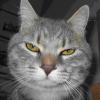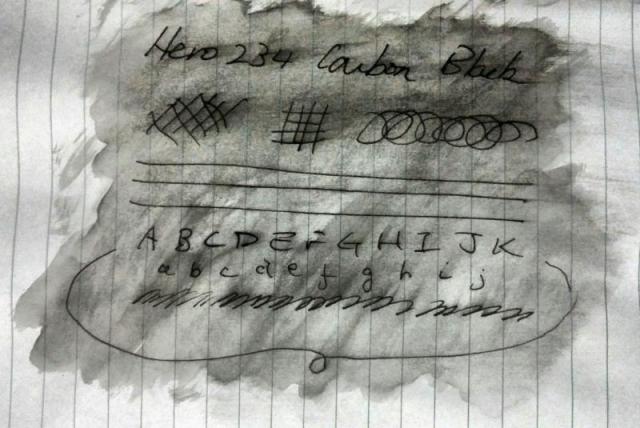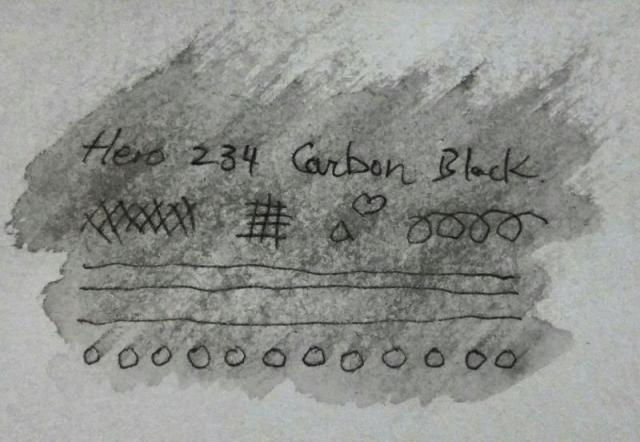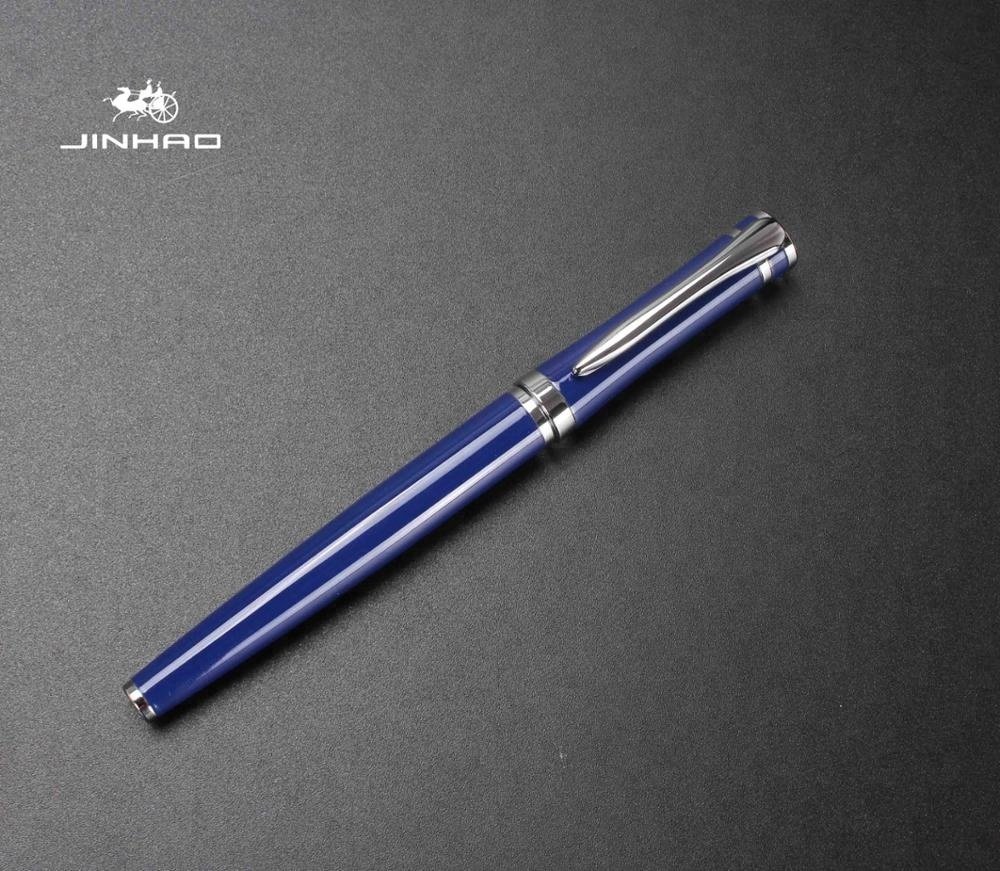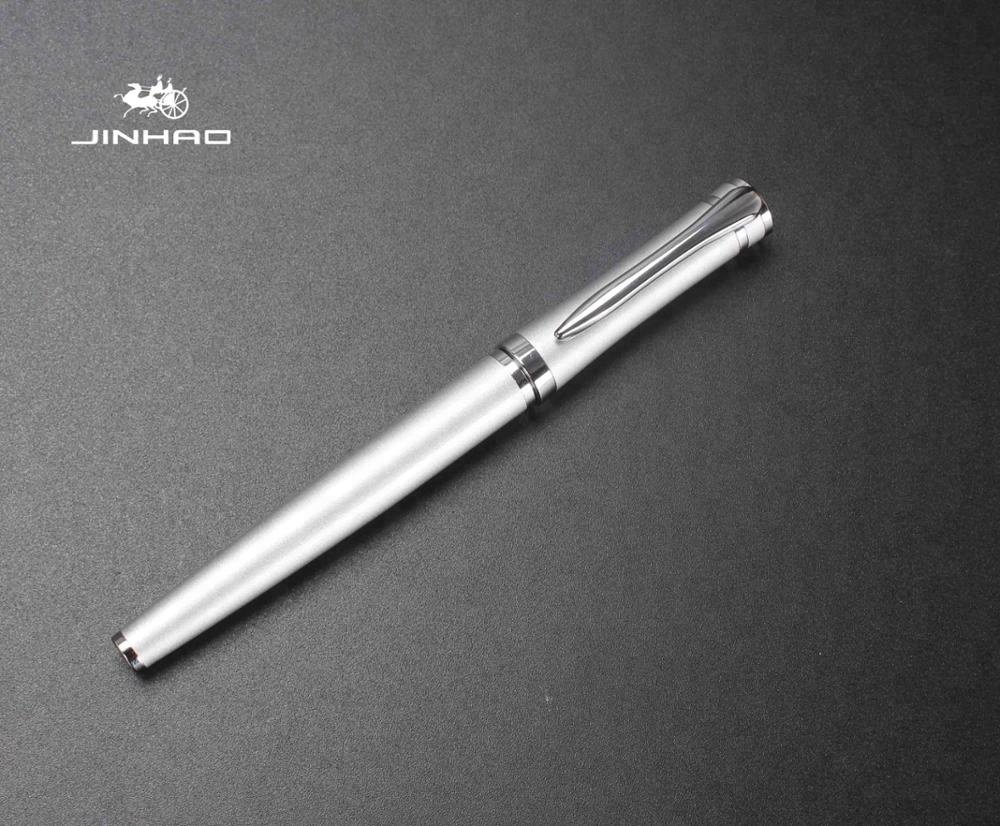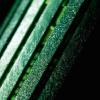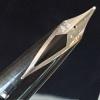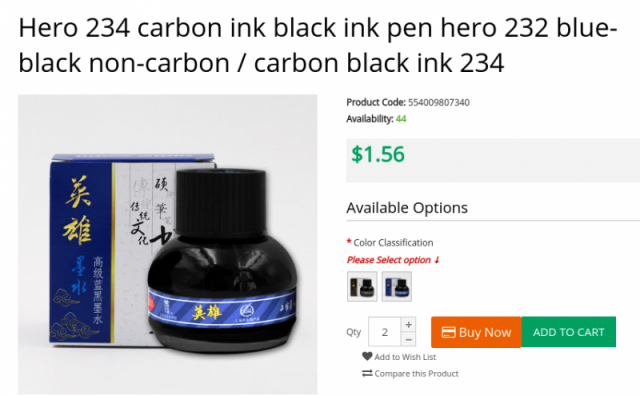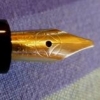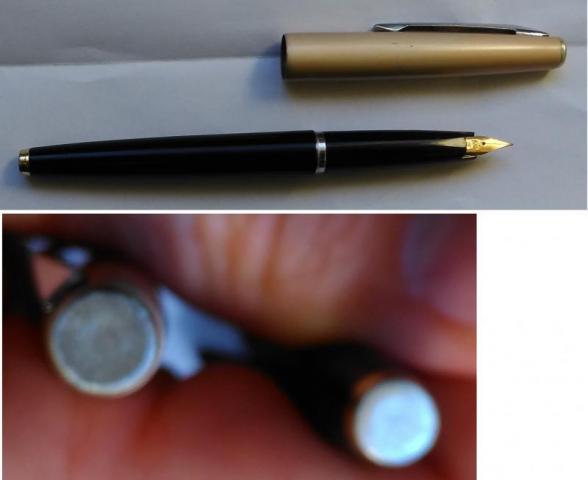Search the Community
Showing results for tags 'hero'.
-
I did not realise the existence of this pen until recent wandering around on dangerous internet. Then I did some research: this Hero version of 856 was introduced in 2016. The forefather of Hero 856 is Gold Star 28 (1950's). Gold Star was founded in Shanghai 1931, and then was nationalised (for example, the state offered you an unnegociatable 1 US dollar (equivant) to acquire 100% share of your pen company. If you happened to own a shipyard, lucy you, it would be 2 dollars.) and relocated to Beijing in 1952. Gold Star went bust and was acquired, together with its designs and drawings, by Hero Group (bankrupted and be required in 2003). Another similar case is Hero 565 and Gold Star 565. Gold Star 28 was said to be associated with governors during Culture Revolution, due to its vintage looking (high resemblance to Parker Vacumatic 1931 to me). Hero 856 introduces the translucent lower barrel as ink window, which was not original. Same translucent design could be found on other 28 variants by other makers before 2016, Changjiang, Xingnongcun, etc, which are still available online as of now. I found the entire period from 1990 to 2010 was a mess in China pen history. Old company down, and the tooling just get disposed and pens were made under a random new name and put on sales online. I would avoid such so called "vintage" from that period. Among all current offers, just by examining the product description pictures, Hero 856 is of the best made, but the cheapest, at $1.5 to $8 depends on your geographic location. The package arrives today. This specific pen was made in Jan, 2024, as printed on the label. The seller told me it was made by Hero plant in Lishui, where Hero holds its entire production since 2010. pro: the sac, 2ml ink after 5 squeezes. milk bottle section, such an ergonomic clever design the nib, wet, smooth, while carrying a touch of feedback a light weight pen con: there is no inner seal cap in the cap. A cap, a clip, a screw of made the whole cap. It currently presents no sealing issue. more pictures there: https://shanghaiknifedude.blogspot.com/2024/03/hero-856-fountain-pen.html with MB146 in comparison:
-
I have noticed that you often receive Hero 616 pens that do not appear to work. How common is it to receive pens with a defect right out of the packet? I presently have pens from 3 different sellers in red, teal and black. Only the red one slurped up ink in the normal manner you would expect of a proper Parker. With the other two pressing on the bar does not properly squeeze the sac. If you take the aluminium sleeve off and directly squeeze the sac with one's fingers the pen fills properly. At least the defective two were not really DOA. I just had a play with them before throwing them away.
- 4 replies
-
- chinese pen
- hero
-
(and 2 more)
Tagged with:
-
We got some design ideas from your neighbor country, didn't we?
-
Hero has made a new pen but has attached a sac filler to it. I may be in the minority here but I prefer c/c fillers (easier to clean, easier to replace due to limited parts availability here). I guess the use of a sac filler follows the vintage aesthetic it's trying to achieve: short waisted section, screw cap, double jewels, "ink window". I do quite like the aesthetics though. Parker Vacumatic? Also comes in a fude nib. I can't find the photo again but the "ink window" can be removed.
-
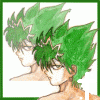
January Clearance PIF: Everything Must Go!
Sailor Kenshin posted a topic in Pay It Forward, Loaner Programs & Group Buys
Included here are Hero, Sailor, Sheaffer and standard international cartridges. Note that Hero carts are meant to be re-useable and re-sealable! They also fit other pens such as Monami Olika, some Parkers, and Moonman. Also: A JHerbin rollerball (takes standard ink carts), Hero 616s and 330s, a Wing Sung 601-A, a Parker Frontier, some 'project' Sheaffer school pens with great nibs, a little gold NoNami, ink vials, pipettes, and more. CONUS Only. It would be great if you could offer to pay for a flat rate box. I will leave this up for a while. Single winner will be chosen by the highly scientific Eeny Meeny Method. Thanks. -
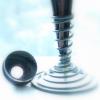
Hero 234 Carbon Black ~ Water Resistance Test
Mech-for-i posted a topic in China, Korea and Others (Far East, Asia)
a few days ago I was lounging over at the Ink forum and some of our fellow memebers express their concern that they can no longer get their needed permanent black , the fabled Platinum Carbon Black. And I though to myself, hey others made permanent ink also and having some time on hand I dedicate some time to investigate how one of the old formula work out, namely the Hero 234 CArbon Black. The test is not anything scientific and only trying to mimic how the ink deal with real life accidents; and here's the result : * Test no.1 is to mimic artist use of ink , Canson 180g Watercolor paper was used, text was put onto the paper, and let sit for 10 min, then smeared with waterbrush, excessive water blotted with facial tissue * Tesat 02 is to mimic having water spilled when doing normal daily writing, Kokuyo Gambal notebook paper, procedure same as test 01 * Test 03 is to mimic accidental water damage when dealing with document well finished, text was put onto paper, and let dry overnight, then is immersed and left in water for 30 minutes, paper used is engineer's stenograph paper ( very fine smooth surface, very light grade ) * Tesat 04 is to mimic water damage in storage, same paper and procedure as test 03, again let dry overnight, then smear with water brush then let it go under running water for 30 min. I say the result speak for itself. It Also show the one character that this old formula had, its slow drying property, as depicted in Test 01 and 02. As side note, Hero had actually 4 different kind of carbon ink, the 84, 214, 234, and 440; and also a non carbon permanent black, the 254. The 234 as picked simply because its the only vintage ink between the lot and having some interesting property. Its more formulated like a calligrapher's ink than fountain pen ink in that it had very high carbon content and that it do use ( plant based ) resin. In fact on its packaging its proclaiming suitable for calligraphy ( by that the made mean small text Chinese brush and pen calligraphy ). ITs known to clog pens if one do not use the pen inked up frequent enough. I've used this ink since way back as a school kid and what more can one ask for a bottle of 55ml which only cost say 3.00 to 4.00 US- 4 replies
-
- ink
- carbon ink
-
(and 3 more)
Tagged with:
-
I was surprised to find a "Hero 3035" pen with the shape of a "Baoer 3035". https://www.aliexpress.com/item/4001036409271.html I am regularly searching for Baoer 3035 to find two missing colors (blue and a kind of brushed metal). The pens have meanwhile arrived and are all inked up to make sure they write. And: they are very good pens. The only "problem" for me is that the nib is not an EF nib. It took me months to find the red Baoer 3035. The two missing colors - if anybody sees them, please send me an alert.
-
I use a Waterman Apostrophe rollerball with a Schneider Topball 850 eurosize refill. Sites like AliExpress offer quite a lot of refills that are sold as Jinhao, Baoer or Hero refills for what seems to be very low prices (even with shipping from China). Is it possible to use these refills in eurosize rollerball of a Waterman rollerball? Are refills from Jinhao, Hero or Baoer (in general) good value compared to eurosize refills from Schneider or Schmidt? What are your opinions about these Chinese refills?
-
The first P51 Style Hero By Ta T`ung Fountan Pen Factory in 1946. Ta T`ung combined with Wolff in 1954. Wolff changed its name into Hero in 1966. 999 Hero is for Chiang Kai-shek`s 60th birthday. The first total P51 style chinese pen I know is No. 51 Vans in late 1945. Ad is 1946.1.1 The first hooded nib part P51 style is No. 51 Diamond. Ad is 1944.10 Ta T`ung received warning from Parker in 1947 for publishing P51-like ad
-
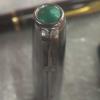 Countries Vietnam DPRK Poland Albania Cuba DDR Romania Soviet Union Background I saw a table in Shanghai Foreign Affairs Chronicle, which is about the projects supported by China in 1955-1990. There are 3 fountain pen makers supported by Shanghai: Hongha Stationary Factory in Vietnam, Poland Fountain Pen Factory, Kim Anh Fountain Pen Factory in Vietnam. By the way, according to Chronicle of Shaanxi Province Vol. 15 Light Indrustry, a fountain pen / ball pen factory for Cuba was cancelled, machines were used to found Xi`an Fountain Pen Factory. And something about DPRK, Albania, DDR, Romania were collected by Shanghai Archives Hall. Hongha Stationary Factory, Nhà máy Văn phòng phẩm Hồng hà, now it is called Công ty Cổ phần Văn phòng phẩm Hồng hà, HH for short. According to a protocol made by PRC and DRV in 1956. 7. 26, PRC would help DRV to found its own fountain pen manufacturer. Shanghai Foreign Economic Relations and Trade Annuals said it began building in 1957, the factory was handed over to DRV in 1959. 12, while shqgz said it finish building in 1959.9 and HH said it is found in 1959. 10. 1, the 10th Anniversary of PRC. It was designed to produce 300,000 fountain pens, 14,000,000 pencils, 600.,000 bottle of ink and so on. The brands of Hongha are TRƯỜNG SON (name of a mountain), HOÀN KIẾM (name of a lake), HỒNG HÀ (name of a river) and TRẠNG NGUYÊN (=Zhuangyuan in Chinese. principal graduate), NÉT HOA (it is for calligraphy), TRƯỜNG SA (under the Vietnamese name of Nansha Islands.) Website: http://www.vpphongha.com.vn/ Online Store: https://vpphonghaonline.com.vn/ NÉT HOA 300 No. 2231 http://bizweb.dktcdn.net/thumb/grande/100/334/874/products/2231-2-4d39fa65-e77e-4b47-97bb-bbeb8b55e4c7.jpg https://bizweb.dktcdn.net/100/334/874/products/2231-d2.jpg According to a thesis named Tổ chức Kế toán chi phí sản xuất và tính giá thành sản phẩm với việc tăng cường quản trị kinh doanh tại Công ty Văn phòng phẩm Hồng hà, https://toc.123doc.net/document/772984-van-phong-pham-hong-ha.htm, HH founded in 1959. 10. 1 and began to product in 1960. Its pencil lines were hand over to another factory in 1972. In 1981, Kim Anh was combined into HH. In 1997, it turn its name into HH stationary company. Now it is a joint stock company. I posted my collection of Vietnamese pens here. The box belongs to TRƯỜNG SON 19-8, according to Voice of Vietnam, https://vov.vn/xa-hoi/can-canh-nhung-cay-but-hong-ha-may-chuc-nam-tuoi-425436.vov, it was produced from 1961, in memory of August Revolution in August, 1945. It based on a No, 24 model in China for student. The pens look like Hero 616 (small size) with Hero 100-style barrel band rather than 616-style barrel band (ink window). The nib is 19.5 mm, which is the same as Hero 100/110 and 616. Vietnamese have their own 616 named Hồng hà 72, which have 6 colours, Black, Red, Light Purple, Sky Blue,Grass Green, Lake Blue and its name is in memory of Air Battle of Dien Bien Phu/Operation Linebacker II, according to VOV, https://vov.vn/kinh-te/105-trieu-dong-3-cay-but-may-hong-ha-315541.vov. I think it used molds provided by China. Or It is another oversea steel nib “581” Hero like 616 (small size). https://vov.vn/uploaded/thuyhoa/2015_08_24/VOV_Hong_ha_72_DUJW.jpg https://vov.vn/xa-hoi/can-canh-nhung-cay-but-hong-ha-may-chuc-nam-tuoi-425436.vov HH was aided by Wolff, which changed its name into Hero in 1966. 10. Wolff helped train Vietnamese trainees, too. According to an article named How Chinese Craftsmen Aid Foreign Countries, Dang`an Chunqiu, 2020. 5, Zhang Shanbao, vice director of Wolff`s Component Workshop and National Model Worker in 1956, were send to Vietnam to help them in 1959. 4. Vietnamese required that HH should be found in 1 years. The support ended 2 month earlier than plan. Zhang earn Vietnamese Model Worker Medal--Anh hùng Lao động Việt Nam. And Vietnamese can produce twice of the design per annum Zhang Shanbao https://kuaibao.qq.com/s/20190301A0QL3200 Here comes Kim Anh Fountain Pen Factory, Nhà máy Bút máy Kim anh. PRC and DRV make protocol in 1967. 10. 6. It was designed that 1,600,000 high grade iridium pointed fountain pens per annum. 500,000 d=11mm with stainless cap, 600,000 d=10.6 with aluminum cap and 500,000 d=10.6 with aluminum cap. Because Vietnamese turned anti-Chinese and many Chinese who living in SRV became refugee, PRC stop support in 1978. 7. 3. According to a Vietnamese thesis named Một số ý kiến đề xuất nhằm hoàn thiện tổ chức kế toán tập hợp chi phí sản xuất và tính giá thành sản phẩm ở Nhà máy Giầy Phúc Yên, https://www.tailieudaihoc.com/doc/246447.html, Kim Anh founded in 1976 and began to produce fountain pen in 1978. 12. 19, machines were supported by China. The product of Kim Anh were exported to Poland, Hungary, South America and so on. In 1982. 4, Kim Anh were combined into Hongha as its branch. In 1987. 10. 1, Comecon draw a conclusion that Kim Anh should be turn to produce shoes, So it turned to be Nhà máy Giầy Phúc Yên. Phuc Yen Shoes Factory. Now, it is Phuc Yen Shoes Joint Stock Company. Its fountain pen brand may be HẠ LONG mentioned in https://vov.vn/xa-hoi/nguoi-suu-tam-but-may-422787.vov. Ngô Việt Dũng, owner of Bút máy Sao Khuê, Hanoi, the main role in the report, is the staff of Handheld, a Vietnamese forum and a former engineer of HH, who is related to TRƯỜNG SA fountain Pen. Bút máy Sao Khuê: http://butmay.com/ Sao Khuê=Kui Xing in Chinese, means the god of examinations, and an associate or servant of the god of literature, Wen Chang. Chongjin Fountain Pen Factory According to Renmin Ribao 1961. 3. 29, PRC and DPRK made an agreement in 1960. 10. 13 and a protocol in 1961. 3. 28, China would support some factories founded by DPRK government including a fountain factory. A document said that fountain pen factory project belonged to Shanghai in 1961. 7. 7. Zhang Shanbao went to Chongjin in 1961. 6 and he earned Chollima medal of DPRK. Another document said that DPRK wanted to cancel 4 factories including fountain pen factory. MS. Lu said she work in Chongjin Changpyeong-Dong Fountain Pen Factory after graduated from high school before DPRK`s anti-Chinese activities in Early Great Proletarian Culture Revolution era in DPRK Chinese Student Online Union forum, http://cxhq.info/simple/?t5121.html. South Korea`s Korea Institute for Industrial Economics and Trade (KIET) published an report in 2014 https://www.e-ia.co.kr/sonosa/newsletter/201412/p2.pdf, there were 4 fountain pen factories in DPRK and one named Chongjin Fountain Pen Factory in Chongjin. Zhang Shanbao in DPRK https://kuaibao.qq.com/s/20190301A0QL3200 Sinuiju Disabled Soldiers` Stationary Factory According to KIET, there is a factory name Sinuiju Disabled Soldier Stationary Factory in Sinuiju. A University of Liaoning`s student thesis named How light industry, textile industry and electronics industry develop during adjustment in Dandong by Wang Qiuke, who graduated in 1981 said that in the year 1980, the Responsible Secretary of the North Pyongan Province Party Committee of the Workers' Party of Korea ask Dandong Fountain Pen Factory for drawing of a machine invented in 1979 when his visit in Liaoning. Pyongyang Fountain Pen Factory/ Mangyongdae Disabled Soldiers’ Fountain-pen Factory According Dandong Yearbook 2002, Dandong Fountain Pen Factory investigate a fountain pen factory in DPRK. And in the yearbook 2004, Dandong Fountain Pen Factory said it founded a long time partnership with Pyongayang Fountain Pen Factory and Sinuiju Trading Company. The only fountain pen factory in Pyongyang is Mangyongdae Disabled Soldiers’ Fountain-pen Factory refer to KIET. South Korea website CyberNK introduce the factory here: http://www.cybernk.net/infoText/InfoHumanCultureDetail.aspx?mc=CC0302&sc=A32010005&tid=CC020200035811&direct=1, The factory locates on Kwangbok Street, Mangyongdae- guyok, Pyongyang City. It mainly produce fountain pen. In 1952. 5, it was founded as Taedong 2.8 Disabled Soldiers’ Cooperative, when Mangyongdae belonged to Taedong County. In 1966, it changed its name into Mangyongdae Disabled Soldiers’ Fountain-pen Factory. The factory later moved to Kwangbok Street and finished building in 1990. 12. Mangyongdae, Pyongyang must be its product while Chollima maybe its product, too. The Japanese Blog shows Mangyongdae and Chollima with Youtube video http://dprknow.jp/blog-entry-3531.html Like PRC, DRV or SRV, DPRK also exported fountain pen to PPL. Poland Fountain Pen Factory/ Częstochowskie Zakłady Materiałów Biurowych (CZMB) Chinese called it Poland Fountain Pen Factory in Chronicle or documents. CZMB`s brand is Zenith. According to Shanghai Foreign Affairs Chronicle, PRC and PRL made protocol in 1961. 3. 29, one day after the protocol with DPRK. The factory is designed to produce 150,000 Model 100, 150,000 Model 581, 10,000 Model 215, 10,000 Model 26,25,000 Model 100A, 150,000 Model 215A per annum. 100A and 215A are mechanical pencils, the other are gold nib fountain pens. Chinese only needed to provide machines and molds. In 1962. 11, the project finished. Shanghai Foreign Economic Relations and Trade Annuals provided more details. More than 50 technicians from more than 20 factories and institutes designed the machines and molds. They were produced in 9 factories which were located on Shanghai, Wuxi and Hangzhou. Chinese provided 100 machines, 108 molds, 5084 components of machine or molds, components of 5 kinds of GOLD nib fountain pen including “215” Lucky, “100” Hero, “581” Hero. The factory would produce 300,000 fountain pens and 10,000,000 pencils per annum. Polish friends pay 100,000 Rbl, about 220,000 Yuan as protocol, while they costed Chinese 713,600 Yuan, about 324000 Rbl. The project finished in 1962.12. Wyborcza has an article here to indroduce the history of CZMB. (https://czestochowa.wyborcza.pl/czestochowa/1,150461,20104150,zenith-byl-tani-a-jakoscia-dorownywal-najlepszym-dlugopisom.html) At the beginning, in 1934, Omega Fountain Pen Factory was found by M. Szaja and A. A. Wrocławski. In 1949, the factory was nationalized. In 1951. 1. 1, Omega combined with some other paper product factories to found CZMB. In 1954, paper product department belonged to a new factory. Only fountan pen factory remained. In 1960s, PRL decided to create Poland Fountain Pen, so Częstochowa was chosed. Plastic engineer Józef Koszkul (now, we should call him Prof. Józef Koszkul) became the person in charge. Even though Chinese provide machines, the nibs of “Polish Parker” were developed by Józef Koszkul, Eugeniusz Helm and Jan Frymus. They formally produce fountain pen in 1965. They got a patent about nib slitting by using softer metal in 1967. Józef Koszkul said that Chinese did not provide introduce of the machines, and they often needed to be repaired. The first model fountain pen after PRL bought Chinese were produced in 1965 basing on Chinese model. There were popular with nice quality. However, Józef Koszkul bought 1kg of GOLD from Mint of Poland to try producing GOLD nib but failed. “Precious metal is too soft.” So CZMB decided to use stainless to produce nib. …… After privatization, CZMB belonged to many company including Monami from South Korea. Now it belongs to Astra, a Polish company. The former workers made an protocol with Astra to produce Zenith fountain pen in some room of former CZMB. https://www.szukajwarchiwach.gov.pl/en/zespol/-/zespol/75198, said that in 1947, Omega Fountain Pen Factory belonged to Rozenwajg, the tenant. Wyborcza provides photos of some of CZMB products. CZMB`s Products after modern improvement. Zenith-2 is Model 581 with a differernt stainless jewels and Late Model 215 style double pressure bar guard. It is early version which is with arrow clip. blizzardboy`s Zenith-2 https://www.fountainpennetwork.com/forum/topic/324428-zenith-2-polish-or-czechoslovakian/ https://archiwum.allegro.pl/oferta/stare-pioro-wieczne-na-atrament-zenith-2-prl-i6216354145.html Early Zentih 2 http://www.legendy-prl.pl/pioro_zenith_2.html Late Zenith 2 Muzeum użytkownika Hajer on https://myvimu.com/ said that Late Zenith 2 (13.5cm) is 1 cm longer than the Early one (12.5cm). Zenith 1 is 14.3cm, I think it based on Model 100. I do not find Polish Model 26 and Model 215.. https://myvimu.com/exhibit/54782573-zenith-1-pioro-wieczne Zenith 9 looks cheap. Brutto’s Zenith 9 https://www.fountainpennetwork.com/forum/topic/76352-pens-from-poland/page-2 The interview with Józef Koszkul by Wyborcza make a mistake that China do not get Parker factory in China or drawing till 1979, Parker and Hero wanted to cooperate on Parker 45 and years ago Lishui bought machines and molds from Parker`s Dongguan Factory in rumor. There was a document about the investigation about production in Częstochowa and project settlement in 1964. And Chinese accepted Polish trainees in 1965. Albania Document said that Shanghai Pen & Plastic Company, the administrator of pen and plastic factories in Shanghai took part in aiding Albania. I do not know whether there was pen factory aided by China in Albania or not. Cuba Fountain Pen & Ball pen Factory→ Xi`an Fountain Pen Factory China also planned to support Cuba in 1963. However, according to Chronicle of Shaanxi Province Vol. 15 Light Indrustry, Light Industry Department decide to hand the machines over Shaanxi Province, and Xi`an agreed to found Local-Administered State-owned Xi`an Fountain Pen Factory in 1966. In 1966. 9, Low rate initial production. In 1967, formal production. 1967-1969, only normal iridium pointed fountain pen. Yanhe延河 In 1969, high grade iridium pointed fountain pen. Xianhe仙鹤 In 1976, fountain pen without iridium. Must be Youyi/Friendship友谊, for exporting. From 1986, cooperating with Hero to produce Hero 258 and Hero 611. Nibs and feeds were provided by Hero. According to Shaanxi Yearbook 1989, Hero 258 were formally produced. Phoenix triumph nib high grade iridium pointed fountain pen were put into market. Shaanxi Yearbook 1990, Hero 611`s mold design was finished. Shaanxi Yearbook 1992, Xi`an cooperated with Hero, Jianhua stationary in Gangxia Town, Wuxi(later it became Wenda, aka. Lujiatang Village-owned Pen Compount Factory) for compounents, Ballpen branch in Mi County, Zhengzhou, and Hong Kong YUE CHUEN for chain roller. Shaanxi Yearbook 1993, asking for Japanese stationary brand Zebra for cooperation. Founding branch with YUE CHUEN. Shaanxi Yearbook 1995, production stopped. Xi`an Yearbook 1999, Xi'an Wanchengshang Property Company merged Xi`an Fountain Pen Factory. Others Romania send investigation group about fountain pen to China in 1959-1960 DDR send exports to investigate Chinese fountain pen, ball pen and daily hardware in 1966-1967. China learn Accordion Filing from Soviet Union. In Renmin Ribao 1956. 10. 24, Fountain Pen New Compounents, Wolff learned Soviet advance experience and succeed in producing accordion ink sac. Wang YX, A few work for improving quality in fountain pen industry, Chinese Light Industry, 1956, 15: 9-11 said in the National Fountain Pen Industry Professional Conference, 1956, the first one was that Soviet accordion sac should be promoted. It had been tested and it could increase ink capacity to 1.4-1.8 cc. Longin, Guangming, and early Lucky`s model 215 used Soviet accordion sac.
Countries Vietnam DPRK Poland Albania Cuba DDR Romania Soviet Union Background I saw a table in Shanghai Foreign Affairs Chronicle, which is about the projects supported by China in 1955-1990. There are 3 fountain pen makers supported by Shanghai: Hongha Stationary Factory in Vietnam, Poland Fountain Pen Factory, Kim Anh Fountain Pen Factory in Vietnam. By the way, according to Chronicle of Shaanxi Province Vol. 15 Light Indrustry, a fountain pen / ball pen factory for Cuba was cancelled, machines were used to found Xi`an Fountain Pen Factory. And something about DPRK, Albania, DDR, Romania were collected by Shanghai Archives Hall. Hongha Stationary Factory, Nhà máy Văn phòng phẩm Hồng hà, now it is called Công ty Cổ phần Văn phòng phẩm Hồng hà, HH for short. According to a protocol made by PRC and DRV in 1956. 7. 26, PRC would help DRV to found its own fountain pen manufacturer. Shanghai Foreign Economic Relations and Trade Annuals said it began building in 1957, the factory was handed over to DRV in 1959. 12, while shqgz said it finish building in 1959.9 and HH said it is found in 1959. 10. 1, the 10th Anniversary of PRC. It was designed to produce 300,000 fountain pens, 14,000,000 pencils, 600.,000 bottle of ink and so on. The brands of Hongha are TRƯỜNG SON (name of a mountain), HOÀN KIẾM (name of a lake), HỒNG HÀ (name of a river) and TRẠNG NGUYÊN (=Zhuangyuan in Chinese. principal graduate), NÉT HOA (it is for calligraphy), TRƯỜNG SA (under the Vietnamese name of Nansha Islands.) Website: http://www.vpphongha.com.vn/ Online Store: https://vpphonghaonline.com.vn/ NÉT HOA 300 No. 2231 http://bizweb.dktcdn.net/thumb/grande/100/334/874/products/2231-2-4d39fa65-e77e-4b47-97bb-bbeb8b55e4c7.jpg https://bizweb.dktcdn.net/100/334/874/products/2231-d2.jpg According to a thesis named Tổ chức Kế toán chi phí sản xuất và tính giá thành sản phẩm với việc tăng cường quản trị kinh doanh tại Công ty Văn phòng phẩm Hồng hà, https://toc.123doc.net/document/772984-van-phong-pham-hong-ha.htm, HH founded in 1959. 10. 1 and began to product in 1960. Its pencil lines were hand over to another factory in 1972. In 1981, Kim Anh was combined into HH. In 1997, it turn its name into HH stationary company. Now it is a joint stock company. I posted my collection of Vietnamese pens here. The box belongs to TRƯỜNG SON 19-8, according to Voice of Vietnam, https://vov.vn/xa-hoi/can-canh-nhung-cay-but-hong-ha-may-chuc-nam-tuoi-425436.vov, it was produced from 1961, in memory of August Revolution in August, 1945. It based on a No, 24 model in China for student. The pens look like Hero 616 (small size) with Hero 100-style barrel band rather than 616-style barrel band (ink window). The nib is 19.5 mm, which is the same as Hero 100/110 and 616. Vietnamese have their own 616 named Hồng hà 72, which have 6 colours, Black, Red, Light Purple, Sky Blue,Grass Green, Lake Blue and its name is in memory of Air Battle of Dien Bien Phu/Operation Linebacker II, according to VOV, https://vov.vn/kinh-te/105-trieu-dong-3-cay-but-may-hong-ha-315541.vov. I think it used molds provided by China. Or It is another oversea steel nib “581” Hero like 616 (small size). https://vov.vn/uploaded/thuyhoa/2015_08_24/VOV_Hong_ha_72_DUJW.jpg https://vov.vn/xa-hoi/can-canh-nhung-cay-but-hong-ha-may-chuc-nam-tuoi-425436.vov HH was aided by Wolff, which changed its name into Hero in 1966. 10. Wolff helped train Vietnamese trainees, too. According to an article named How Chinese Craftsmen Aid Foreign Countries, Dang`an Chunqiu, 2020. 5, Zhang Shanbao, vice director of Wolff`s Component Workshop and National Model Worker in 1956, were send to Vietnam to help them in 1959. 4. Vietnamese required that HH should be found in 1 years. The support ended 2 month earlier than plan. Zhang earn Vietnamese Model Worker Medal--Anh hùng Lao động Việt Nam. And Vietnamese can produce twice of the design per annum Zhang Shanbao https://kuaibao.qq.com/s/20190301A0QL3200 Here comes Kim Anh Fountain Pen Factory, Nhà máy Bút máy Kim anh. PRC and DRV make protocol in 1967. 10. 6. It was designed that 1,600,000 high grade iridium pointed fountain pens per annum. 500,000 d=11mm with stainless cap, 600,000 d=10.6 with aluminum cap and 500,000 d=10.6 with aluminum cap. Because Vietnamese turned anti-Chinese and many Chinese who living in SRV became refugee, PRC stop support in 1978. 7. 3. According to a Vietnamese thesis named Một số ý kiến đề xuất nhằm hoàn thiện tổ chức kế toán tập hợp chi phí sản xuất và tính giá thành sản phẩm ở Nhà máy Giầy Phúc Yên, https://www.tailieudaihoc.com/doc/246447.html, Kim Anh founded in 1976 and began to produce fountain pen in 1978. 12. 19, machines were supported by China. The product of Kim Anh were exported to Poland, Hungary, South America and so on. In 1982. 4, Kim Anh were combined into Hongha as its branch. In 1987. 10. 1, Comecon draw a conclusion that Kim Anh should be turn to produce shoes, So it turned to be Nhà máy Giầy Phúc Yên. Phuc Yen Shoes Factory. Now, it is Phuc Yen Shoes Joint Stock Company. Its fountain pen brand may be HẠ LONG mentioned in https://vov.vn/xa-hoi/nguoi-suu-tam-but-may-422787.vov. Ngô Việt Dũng, owner of Bút máy Sao Khuê, Hanoi, the main role in the report, is the staff of Handheld, a Vietnamese forum and a former engineer of HH, who is related to TRƯỜNG SA fountain Pen. Bút máy Sao Khuê: http://butmay.com/ Sao Khuê=Kui Xing in Chinese, means the god of examinations, and an associate or servant of the god of literature, Wen Chang. Chongjin Fountain Pen Factory According to Renmin Ribao 1961. 3. 29, PRC and DPRK made an agreement in 1960. 10. 13 and a protocol in 1961. 3. 28, China would support some factories founded by DPRK government including a fountain factory. A document said that fountain pen factory project belonged to Shanghai in 1961. 7. 7. Zhang Shanbao went to Chongjin in 1961. 6 and he earned Chollima medal of DPRK. Another document said that DPRK wanted to cancel 4 factories including fountain pen factory. MS. Lu said she work in Chongjin Changpyeong-Dong Fountain Pen Factory after graduated from high school before DPRK`s anti-Chinese activities in Early Great Proletarian Culture Revolution era in DPRK Chinese Student Online Union forum, http://cxhq.info/simple/?t5121.html. South Korea`s Korea Institute for Industrial Economics and Trade (KIET) published an report in 2014 https://www.e-ia.co.kr/sonosa/newsletter/201412/p2.pdf, there were 4 fountain pen factories in DPRK and one named Chongjin Fountain Pen Factory in Chongjin. Zhang Shanbao in DPRK https://kuaibao.qq.com/s/20190301A0QL3200 Sinuiju Disabled Soldiers` Stationary Factory According to KIET, there is a factory name Sinuiju Disabled Soldier Stationary Factory in Sinuiju. A University of Liaoning`s student thesis named How light industry, textile industry and electronics industry develop during adjustment in Dandong by Wang Qiuke, who graduated in 1981 said that in the year 1980, the Responsible Secretary of the North Pyongan Province Party Committee of the Workers' Party of Korea ask Dandong Fountain Pen Factory for drawing of a machine invented in 1979 when his visit in Liaoning. Pyongyang Fountain Pen Factory/ Mangyongdae Disabled Soldiers’ Fountain-pen Factory According Dandong Yearbook 2002, Dandong Fountain Pen Factory investigate a fountain pen factory in DPRK. And in the yearbook 2004, Dandong Fountain Pen Factory said it founded a long time partnership with Pyongayang Fountain Pen Factory and Sinuiju Trading Company. The only fountain pen factory in Pyongyang is Mangyongdae Disabled Soldiers’ Fountain-pen Factory refer to KIET. South Korea website CyberNK introduce the factory here: http://www.cybernk.net/infoText/InfoHumanCultureDetail.aspx?mc=CC0302&sc=A32010005&tid=CC020200035811&direct=1, The factory locates on Kwangbok Street, Mangyongdae- guyok, Pyongyang City. It mainly produce fountain pen. In 1952. 5, it was founded as Taedong 2.8 Disabled Soldiers’ Cooperative, when Mangyongdae belonged to Taedong County. In 1966, it changed its name into Mangyongdae Disabled Soldiers’ Fountain-pen Factory. The factory later moved to Kwangbok Street and finished building in 1990. 12. Mangyongdae, Pyongyang must be its product while Chollima maybe its product, too. The Japanese Blog shows Mangyongdae and Chollima with Youtube video http://dprknow.jp/blog-entry-3531.html Like PRC, DRV or SRV, DPRK also exported fountain pen to PPL. Poland Fountain Pen Factory/ Częstochowskie Zakłady Materiałów Biurowych (CZMB) Chinese called it Poland Fountain Pen Factory in Chronicle or documents. CZMB`s brand is Zenith. According to Shanghai Foreign Affairs Chronicle, PRC and PRL made protocol in 1961. 3. 29, one day after the protocol with DPRK. The factory is designed to produce 150,000 Model 100, 150,000 Model 581, 10,000 Model 215, 10,000 Model 26,25,000 Model 100A, 150,000 Model 215A per annum. 100A and 215A are mechanical pencils, the other are gold nib fountain pens. Chinese only needed to provide machines and molds. In 1962. 11, the project finished. Shanghai Foreign Economic Relations and Trade Annuals provided more details. More than 50 technicians from more than 20 factories and institutes designed the machines and molds. They were produced in 9 factories which were located on Shanghai, Wuxi and Hangzhou. Chinese provided 100 machines, 108 molds, 5084 components of machine or molds, components of 5 kinds of GOLD nib fountain pen including “215” Lucky, “100” Hero, “581” Hero. The factory would produce 300,000 fountain pens and 10,000,000 pencils per annum. Polish friends pay 100,000 Rbl, about 220,000 Yuan as protocol, while they costed Chinese 713,600 Yuan, about 324000 Rbl. The project finished in 1962.12. Wyborcza has an article here to indroduce the history of CZMB. (https://czestochowa.wyborcza.pl/czestochowa/1,150461,20104150,zenith-byl-tani-a-jakoscia-dorownywal-najlepszym-dlugopisom.html) At the beginning, in 1934, Omega Fountain Pen Factory was found by M. Szaja and A. A. Wrocławski. In 1949, the factory was nationalized. In 1951. 1. 1, Omega combined with some other paper product factories to found CZMB. In 1954, paper product department belonged to a new factory. Only fountan pen factory remained. In 1960s, PRL decided to create Poland Fountain Pen, so Częstochowa was chosed. Plastic engineer Józef Koszkul (now, we should call him Prof. Józef Koszkul) became the person in charge. Even though Chinese provide machines, the nibs of “Polish Parker” were developed by Józef Koszkul, Eugeniusz Helm and Jan Frymus. They formally produce fountain pen in 1965. They got a patent about nib slitting by using softer metal in 1967. Józef Koszkul said that Chinese did not provide introduce of the machines, and they often needed to be repaired. The first model fountain pen after PRL bought Chinese were produced in 1965 basing on Chinese model. There were popular with nice quality. However, Józef Koszkul bought 1kg of GOLD from Mint of Poland to try producing GOLD nib but failed. “Precious metal is too soft.” So CZMB decided to use stainless to produce nib. …… After privatization, CZMB belonged to many company including Monami from South Korea. Now it belongs to Astra, a Polish company. The former workers made an protocol with Astra to produce Zenith fountain pen in some room of former CZMB. https://www.szukajwarchiwach.gov.pl/en/zespol/-/zespol/75198, said that in 1947, Omega Fountain Pen Factory belonged to Rozenwajg, the tenant. Wyborcza provides photos of some of CZMB products. CZMB`s Products after modern improvement. Zenith-2 is Model 581 with a differernt stainless jewels and Late Model 215 style double pressure bar guard. It is early version which is with arrow clip. blizzardboy`s Zenith-2 https://www.fountainpennetwork.com/forum/topic/324428-zenith-2-polish-or-czechoslovakian/ https://archiwum.allegro.pl/oferta/stare-pioro-wieczne-na-atrament-zenith-2-prl-i6216354145.html Early Zentih 2 http://www.legendy-prl.pl/pioro_zenith_2.html Late Zenith 2 Muzeum użytkownika Hajer on https://myvimu.com/ said that Late Zenith 2 (13.5cm) is 1 cm longer than the Early one (12.5cm). Zenith 1 is 14.3cm, I think it based on Model 100. I do not find Polish Model 26 and Model 215.. https://myvimu.com/exhibit/54782573-zenith-1-pioro-wieczne Zenith 9 looks cheap. Brutto’s Zenith 9 https://www.fountainpennetwork.com/forum/topic/76352-pens-from-poland/page-2 The interview with Józef Koszkul by Wyborcza make a mistake that China do not get Parker factory in China or drawing till 1979, Parker and Hero wanted to cooperate on Parker 45 and years ago Lishui bought machines and molds from Parker`s Dongguan Factory in rumor. There was a document about the investigation about production in Częstochowa and project settlement in 1964. And Chinese accepted Polish trainees in 1965. Albania Document said that Shanghai Pen & Plastic Company, the administrator of pen and plastic factories in Shanghai took part in aiding Albania. I do not know whether there was pen factory aided by China in Albania or not. Cuba Fountain Pen & Ball pen Factory→ Xi`an Fountain Pen Factory China also planned to support Cuba in 1963. However, according to Chronicle of Shaanxi Province Vol. 15 Light Indrustry, Light Industry Department decide to hand the machines over Shaanxi Province, and Xi`an agreed to found Local-Administered State-owned Xi`an Fountain Pen Factory in 1966. In 1966. 9, Low rate initial production. In 1967, formal production. 1967-1969, only normal iridium pointed fountain pen. Yanhe延河 In 1969, high grade iridium pointed fountain pen. Xianhe仙鹤 In 1976, fountain pen without iridium. Must be Youyi/Friendship友谊, for exporting. From 1986, cooperating with Hero to produce Hero 258 and Hero 611. Nibs and feeds were provided by Hero. According to Shaanxi Yearbook 1989, Hero 258 were formally produced. Phoenix triumph nib high grade iridium pointed fountain pen were put into market. Shaanxi Yearbook 1990, Hero 611`s mold design was finished. Shaanxi Yearbook 1992, Xi`an cooperated with Hero, Jianhua stationary in Gangxia Town, Wuxi(later it became Wenda, aka. Lujiatang Village-owned Pen Compount Factory) for compounents, Ballpen branch in Mi County, Zhengzhou, and Hong Kong YUE CHUEN for chain roller. Shaanxi Yearbook 1993, asking for Japanese stationary brand Zebra for cooperation. Founding branch with YUE CHUEN. Shaanxi Yearbook 1995, production stopped. Xi`an Yearbook 1999, Xi'an Wanchengshang Property Company merged Xi`an Fountain Pen Factory. Others Romania send investigation group about fountain pen to China in 1959-1960 DDR send exports to investigate Chinese fountain pen, ball pen and daily hardware in 1966-1967. China learn Accordion Filing from Soviet Union. In Renmin Ribao 1956. 10. 24, Fountain Pen New Compounents, Wolff learned Soviet advance experience and succeed in producing accordion ink sac. Wang YX, A few work for improving quality in fountain pen industry, Chinese Light Industry, 1956, 15: 9-11 said in the National Fountain Pen Industry Professional Conference, 1956, the first one was that Soviet accordion sac should be promoted. It had been tested and it could increase ink capacity to 1.4-1.8 cc. Longin, Guangming, and early Lucky`s model 215 used Soviet accordion sac. -
As far as I can tell Hero 232 Blue-Black seems to be getting scarce from my online sources. (I recently ordered a bottle Hero 232 & 233 and was sent 2 bottles of 233 instead. Then the seller promptly raised the price to over 3x what I had paid ...) Hero 202 is still readily available. I did a search here: the evidence - while there's not a lot of it - seems to suggest that Hero 202 is likely iron gall. Has any more evidence turned up recently? I'll probably take a chance on it since it is so inexpensive but I need more ink that I won't use like I need a hole in my head.
-
Manufacturer: Hero Series, colour: Blue-Black Pen: Waterman Hemisphere „F” Paper: Image Volume (gramatura 80 g / m2) Specifications: Flow rate: good Lubrication: medium Bleed through: unnoticeable Shading: noticeable Feathering: unnoticeable Saturation: good A drop of ink smeared with a nib The ink smudged with a cotton pad Lines Water resistance Ink drying time Ink drops on a handkerchief Chromatography Sample text in an Image Volume (gramatura 80 g / m2) Sample text in an Oxford notebook A5 (90 g / m2) Sample letters in a Rhodia notebook No 16 (90 g / m2) Palette of shades
-
Producent: Hero Seria, kolor: Washable Blue Pióro: Waterman Hemisphere „F” Papier: Image Volume (gramatura 80 g / m2) Specifications: Flow rate: good Lubrication: good Bleed through: unnoticeable Shading: noticeable Feathering: unnoticeable Saturation: good A drop of ink smeared with a nib The ink smudged with a cotton pad Lines Water resistance Ink drying time Ink drops on a handkerchief Chromatography Sample text in an Image Volume (gramatura 80 g / m2) Sample text in an Oxford notebook A5 (90 g / m2) Sample letters in a Rhodia notebook No 16 (90 g / m2) Sample letters in a Clairefontaine (gramatura 120 g / m2) Palette of shades
-
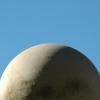
Non-Invasive Optical Micro-Identification Of Ink Verification In Pen Ink Handwriting
Karmachanic posted a topic in Inky Thoughts
In case you were wondering about the scientific differences between Hero and Ostrich inks observable through scanning electron microscopy. https://www.sciencedirect.com/science/article/pii/S2211715620300035- 2 replies
-
- microscopy
- hero
-
(and 1 more)
Tagged with:
-
Hero's Iron Gall ink has quite a reputation here so I thought I would give it a shot. It turns out that it is no longer on Amazon or ebay, but I did manage to find it on a site called ebuy7. I was a little reluctant to place an order, but the checkout was (seemingly) legitimately handed off to Paypal so I didn't have to risk my credit card details and if the ink never arrives I am confident I will be able to claw back the miniscule investment it cost for two bottles. I'll update the thread if and when the bottles arrive. If anyone has a more reliable, potentially reputable, source, please do share... # edit. I found them on aliexpress eventually, but they are a lot more expensive, don't deliver to my part of the world, and that website is such a royal pain in the asset, I refuse to patronise it.
-
Hero 360 Degree / 70 Review: Just Say No The Hero 360 Degree pen, which seems to share the same nib, body and design as the Hero 70, is about US $3 on eBay, but its actual value is a negative number. Although on paper it seems like a decent and perhaps interesting pen, writing with it is an exercise in self-inflicted aggravation, as every aspect of it has some deeply irritating flaw. Barrel Diameter: 10 mm Length: 14.5 cm capped Nib: Maddening Weight: I don't have access to a scale right now but similar to or lighter than 78G At first glance it was a promising pen that had a slim solid metal body and cap, a low weight and a nice color, although the appearance is marred by the cap's somewhat unfortunate bulging forehead, it has a greater impact in person than in pictures and is especially noticeable when the clip is towards the viewer, to be frank I try not to look at it. The plain metal section is not slippery and the pen is comfortable to hold, the cap posts effectively and without unbalancing the pen, the barrel holds Hero's standard aerometric filling system which does to its credit work reliably, but the barrel unscrews itself under the slightest provocation, including sitting immobile on my desk. I don't know how and am open to the idea that a malevolent influence is taking a hand somewhere, because I can't figure out any other reason for spontaneous disassembly. It has never leaked into the cap and in many respects seems rock solid internally, but a good feed can not save this pen. The major interesting feature of the 360 Degree is the nib design, meant to allow the pen to write from any orientation without regard to whether the nib is right side up or not, and while I give Hero's engineers for the attempt to think outside the box the end result is deceptively horrible. Instead of having 2 tines which touch on a flat edge to create a single slit and have a smooth writing surface, the 360 Degree has 2 slits that cross perpendicularly, creating 4 tines, all of which end in a sharp corner right at the tip of the nib, and several of which likely have some other problem I can not bring myself to care enough about to troubleshoot. I wrote with this pen for several days during a work week, initially finding it interesting and assuming that any problems could be adjusted to or smoothed away, and not being all that invested since it was simply a cheap pen. The longer I used it, the clearer it became that this pen was actually tremendously irritating to use, regardless of the speed I wrote at, the angle I held it at, or which of the multiple writing surfaces I attempted to use, so I put it away for several months, then smoothed it and attempted to use it again. This second round has only confirmed my initial impression that this nib is an ill-conceived notion that has been badly executed. The arrangement of 4 tines means that inevitably a sharp edge from the central meeting point will catch on the paper somewhere, and it is impossible, or at least not possible in the amount of time I was willing to spend, to smooth these inner edges enough to make a difference. Held upright like a ballpoint the pen writes but is scratchy and noisy, held at an angle to the paper like a fountain pen the pen is quieter and smoother but skips frequently. Words can not convey how essentially grating writing with this pen is.
-
Hello again to all my FPN friends, I happened to have 2 pens of similar flow and nib size inked with these and thought it might be helpful to compare them. Both are iron-gall inks and somewhat similar in color. However, at least in my experience, Hero 232 is much drier than Pelikan 4001 Blue-Black. It's so dry that it stopped flowing at all in the pen I used for this comparison once the converter wasn't completely full. The dryness may be due to high iron gall content. I assume this because when I flushed the pen, there was a notable strong smell of fresh blood that I've only experienced before with the super-charged iron gall ink ESSRI. Hero 232 usually has the same smell many other Chinese inks, as well as Pilot Blue-Black, but when mixed with water in the sink the iron smell took over. So all you vampires out there will probably enjoy Hero 232. General observations: - The Hero is drier than the Pelikan. - The Hero is darker and more saturated than the Pelikan. - The Pelikan shades easier than the Hero. - The Hero can produce a nice, deep indigo when fully saturated, slightly reminiscent of my favorite Kung Te-Chung. - In China, the Hero is one tenth the price of the Pelikan. - Both are iron gall inks, but not so much as to harm your pens or leave sediment behind. - On absorbent paper, both are almost completely waterproof. The Hero looked completely unchanged, but some slight fading with the Pelikan. - Both are great inks if you have wet pens. The pen used for the Hero 232 writing is a Pelikan P30 with soft 14k broad nib. The pen used for Pelikan Blue-Black writing is an ebonite FPR Himalaya fitted with an extremely flexible steel Artus/Degussa oblique broad ("BS") nib and feed. I just scribbled this out on a cheap notepad, so I don't know how different they would look on better papers like TR or Rhodia. Comparison Close-ups: Hero 232 Close-up: Pelikan 4001 Blue-Black Close-ups:
-
Hero 007 is one of the cheapest fountain pens on the market. You can easily buy a pack of ten for around 10$, shipment included. Designwise it's clearly Parker 51 inspired pen, not a full knock-off like Hero 616 but the resemblance is rather strong. Personally I find it sad that chinese manufacturers don't try to create something really new. Instead they copy designs with passion. Today I'm not here to judge but to review one of their budget pens - Hero 007. I bought a pack of these pens because they are colorful and cheap and can be used to test inks and improve nib smoothing skills. Even when I kill one of them nothing happens. No feeling of loss. Not a single tear will be shed upon it's dead body. The pen is small and made of rather low quality plastic. It's sold in five colors: black, greem, orange, yellow, blue turquoise. The cap is snap-on and the locking mechanism sucks. Frankly it becomes loose very easy and very fast. Every time you forget you have inked pen somewhere in the bag or a pocket you risk to discover the fact by looking at ink stain appear suddenly in this place. Construction and feel in the hand The pen is very light. Actually it almost feels to light, it doesn't give a substantial feel I enjoy. On the other hand Hero 007 is quite comfortable, especially if you write a lot. Push off cap is metal but as I've mentioned above it doesn't hold to the section very well. The construction is very simple and if you won't abuse it it should be durable (except for the cap that inevitably will become loose, I'm afraid). Nib Well, it's a lottery, to be honest. Out of ten pens I received 6 write perfectly well and are very pleasant to use, three needed some tweaking and one was scratchy. Not tragic result, but it could be much better. If you're lucky though you'll be surprised to experience how well this cheapie writes. I would describe Hero 007 as a medium writer - not too wet, not to dry. The hooded nib is smooth, and works fine on all papers I've tried to pierce with it. I would say that the nibs that were good out of box are surprisingly good. Filling system Aerometric filling system. The sac appears to be permanently glued (?) to the section - you won't be able to replace it with a cartridge.The system is easy to operate, works well and holds a reasonable good amount of ink, probably more than most short cartridges but I haven't measured it. Summary If you're lucky and the nib writes well, this pen can be considered as great deal. It won't last forever, but it's kind of pen that serves its basic function well and even if you loose it or sit on it or do to it's brittle body whatever cruel stuff your imagination suggest it won't be a big deal. GIven that you can have this pen for a dollar, I can recommend it. Actually I've bought the pack and given most of them to others. Hopefully someone who tasted writing with fountain pen will try to get deeper into the hobby. Just make sure that the pen you offer has good nib
-
Hi everyone, I'm talking about the pen, not the plane. Has anyone used one of these?? I handled one in a local shop the other day and have been thinking about it ever since. It has a nice tactile surface, seems well balanced, and looks pretty cool. At least here in China they cost a lot more than the average Hero pens, retail is around US$27 but that can be had for half that. Before taking the plunge I thought I'd ask around to get some opinions. Thanks!
-
If the subject has been done to death, sorry. How does one ensure that you are getting the best version? That's weird: A knock-off of a knock-off. The worst are like dragging a finger nail on a emery board, not surprising given that the nib is very fine.
-
this is so funny .... OK, it said Blue Black Blue Berry & Blackcurrant flavor Cocktail ( 3.8% Alcohol content ) 275ml X2 , Blue Black Wine Scented ink 50ml , reminder : ink is not for consumption ... also included ink bottle shape wine glass, ink bottle shape bottle opener .. the pen is just the add on bonus
-
I went to a vintage shop a few days ago, and I picked up this pen. Does anyone know what pen this is and when it was made? The only markings on the pen are the words "white feather", so I'm assuming it's a Chinese pen. But I'd like to get more info on the pen. It writes beautifully.
- 3 replies
-
- vintage pens
- hero
-
(and 1 more)
Tagged with:
-
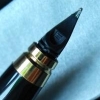
Anybody Knows This Beauty? Is It From China, Korea Or Japan? What Is This Pen?
Lodzermensch posted a topic in Fountain & Dip Pens - First Stop
What is this pen? What is the brand / producer / origin? What model is this? This is a pen given to me by my father in early 80-ties. I used it for a couple of years as my every day pen. I cannot identify the producer nor the model. Must be produced somewhere in 1970-ties ot late 1960-ties? Much likely to be from China ? Maybe Japan? Maybe someone is able to read the signature on the nib? -
Does anyone know anything about the Lignan company? I was lucky enough to win a pen by them in a generous PIF, and can't find out anything about the pen. It writes very nicely in an EF nib, but an EF that is broader than most (which surprises me in a pen I believe is Asian). An old thread on the forum said the marque was a sub-marque of the Hero company, but I don't know much about them either! I like knowing a little bit about my pens, so I'd appreciate any information y'all can share. Thanks.
-
Wing Sung 9159 And 3001 Your Comparison/thoughts?
Lomi posted a topic in China, Korea and Others (Far East, Asia)
Hello there , and i guess it's going to be my first post there >< So i'm getting myself quite a few pens that i guess i might later share info and my thought about, but i'm here right now to talk about only two, i'm looking at different pens and my eye caught an interesting coincidence, there 4 exactly similar pens with slight difference that are all copy of Pilot 78G, they are well known Wing Sung 659 (was a first test? + it's hard to aquire?), Wing Sung 3001(A)(second test of the same pen?) Wing Sung 9159(most newer pen?), and Hero 1202 all in transparent body or clear color as they call it. Most of them was already discussed there but i want to know what the major difference between 9159 and 3001A because they are easiest to aquire right now, if some of you guys have two of them pls share info on how they both perform and if is one feel like predecessor to another or not? i can see that 9159 on all photos and reviews have clear feed and nib that have Wing Sung logo on it + they can be purchased with full silver look to it and full golden (colored nib+clip+rings in this colors) also this model have word "Lucky" on the clip, is this all the difference to it? 3001A on the other hand doesn't have any logo on nib, only name of the company "Wing Sung", and cannot be purchased in silver, about feed idk i guess it's clear too and clip as i seen have word "Wing.s" on it in Hero 1202 and Wing Sung 659 i'm not that interested but i guess they all perform quite the same. Thanks in advance!


